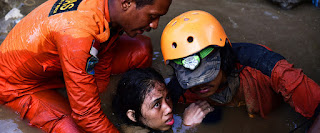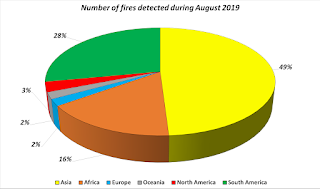What Does Flash Drought Look Like in Your Region? The overall goal of the research was to explore seasonal characteristics of flash droughts within the growing season, which runs primarily from March or April to October, and how they vary across the United States. Specifically, the analysis focused on quantifying the timing, intensity, preceding conditions, and the likelihood of persistence of flash drought to hydrological drought. To quantify the regional characteristics of flash drought events, the study focused on nine climate regions across the United States grouped by their climatologically similar characteristics. ... Read more
Interesting Facts
Types of drought. Research in the early 1980s uncovered more than 150 published definitions of drought. The definitions reflect differences in regions, needs, and disciplinary approaches. Wilhite and Glantz categorized the definitions in terms of four basic approaches to measuring drought: meteorological, hydrological, agricultural, and socioeconomic. The first three approaches deal with ways to measure drought as a physical phenomenon. The last deals with drought in terms of supply and demand, tracking the effects of water shortfall as it ripples through socioeconomic systems... Read more
Drought leaves Chilean growers in limbo. Almost 90 percent of Chilean fruit producers believe they face a fragile or unsustainable future because of the drought affecting large swathes of the country, according to a survey by fruit producer federation Fedefruta. The survey, entitled ‘Impact of Drought on Chilean Fruit Production’, was created to assess the perception of growers in the country’s main fruit-producing regions. Releasing the results last week, Fedefruta said it had collected 375 responses from growers from Atacama to Los Lagos... Read more
Long-Term Drought Parches Chile. Central Chile, where most Chileans live, has received 30 percent less rainfall than normal over the past decade, a situation that scientists are referring to as “megadrought.” With rainfall deficits of 80 to 90 percent, 2019 has been particularly. The map above depicts the Normalized Difference Vegetation Index (NDVI), a measure of the health and greenness of vegetation based on how much red and near-infrared light it reflects... Read more
What Panama’s Worst Drought Means for Its Canal’s Future. A severe drought in Panama has resulted in lower water levels in the Panama Canal, forcing some shippers to limit the amount of cargo their largest ships carry so they can safely navigate the waterway. “The last five months have been the driest dry season in the history of the canal,” said Carlos Vargas, the Panama Canal Authority’s executive vice president for environment, water, and energy... Read more
Policy Developments and Outlook
Migration in Central America and the Case of the Northern Countries. Poverty is indeed a crucial driver, particularly in Honduras and Guatemala, where it affects about 70% of the overall population. Environmental or climatic factors are also playing an increasingly central role in increasing migration flows. In the past few decades, northern CA countries were in fact hit by hurricanes, earthquakes, and drought, increasing the vulnerability of the population (especially in rural areas). The rural poor are the most vulnerable to economic, political and even environmental crises due to the very high levels of vulnerability of the agricultural sector. They represent 82% of the population in Honduras, 77% in Guatemala and 49% in El Salvador. Moreover, about 34% of the labor force in Guatemala and Honduras works in agriculture. Read more
In Honduras, Communities Fight Drought With Watershed Work. “The purpose of the Dry Corridor Alliance is to reduce poverty in the Dry Corridor region through the implementation of three components: focus on agriculture productivity, watershed management, and food security,” said Marco Tulio Mejia, a technical field officer with the alliance. “All of that is linked to one fact, which is the water.”... Read more
Latin America and the Caribbean’s Drought Atlas. The occurrence of droughts in Latin America and the Caribbean has had devastating impacts on vulnerable communities in the region, generating severe social, economic and environmental impacts when they extend over time. Therefore, knowing the recurrence of these events is essential to be able to anticipate these threats and to put concrete policies and measures to address them... Read more














